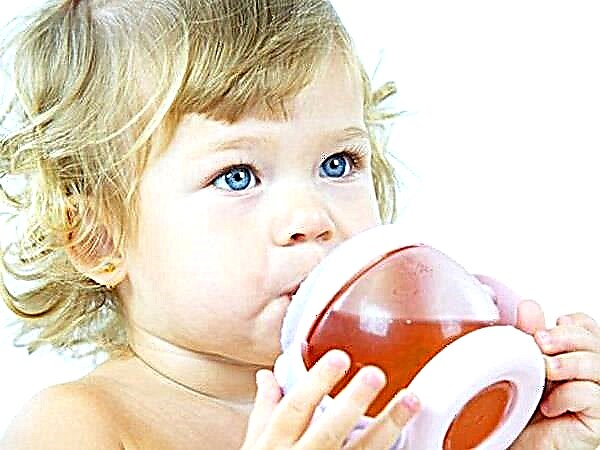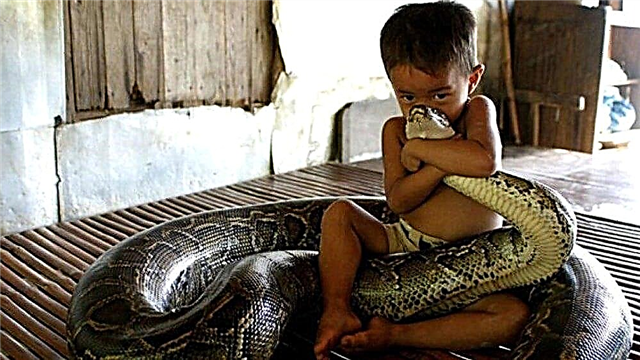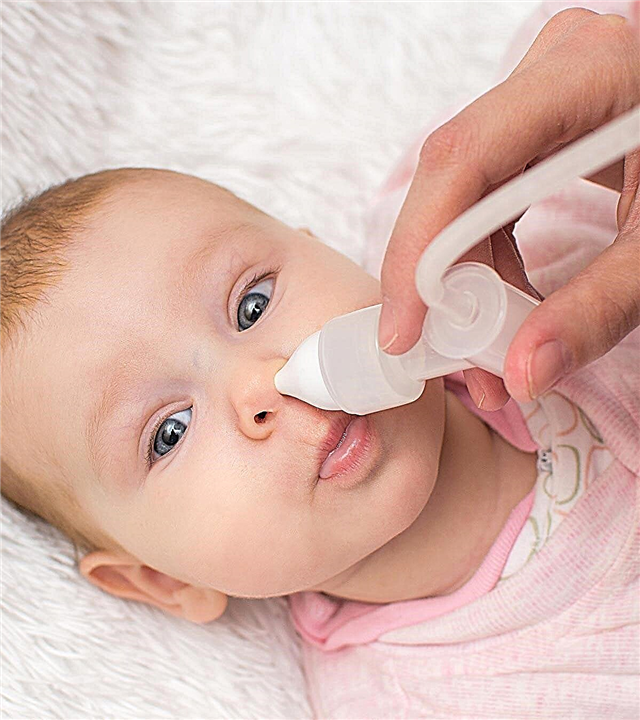In the summer-spring period, seeking medical help for bee stings to an allergist-immunologist is far from uncommon. Allergy to insect bites is very insidious and dangerous for its lightning speed and severity of the consequences for the child's body. Therefore, all parents need to have the skills to provide first aid.
Bees belong to the order Hymenoptera, the Apidae family. Females have a barbed sting that remains in the victim's body after being stung. Bees only sting when defending.
Poison with allergens is absorbed into the bloodstream and quickly spreads throughout the body, causing a toxic or allergic reaction in susceptible individuals. Mortality in anaphylactic reactions reaches 80%. The causes of death are a sharp drop in blood pressure, collapse, anaphylactic shock.
Bee venom as an allergen
Bees produce venom containing low molecular weight compounds - apamine, melittin, phosphatases, esterases, amines.

The latter increase the permeability of the vascular wall and provoke the development of edema. The protein compounds of the poison cause a toxic reaction. Enzymes enhance the allergic process. More than half of the dry residue of bee venom is melittin.
Even in small doses, this substance can damage nerves and cells. The MCD peptide causes the release of histamine from diseased cells. Apamine blocks nerve impulses.
The main allergens include:
- phospholipases A and B;
- hyaluronidase;
- melittin;
- apamine;
- MCD peptide.
How does an allergic reaction to a bee sting manifest in a child?
It must be understood that the reaction to a bee sting can be both local and systemic. Systemic reactions are particularly severe and unpredictable.
With a pronounced local reaction, the child develops swelling of more than 10 cm in diameter at the sting site, the baby may be bothered by the itching and soreness of the bite site.
Systemic reactions are classified into 4 degrees of severity:
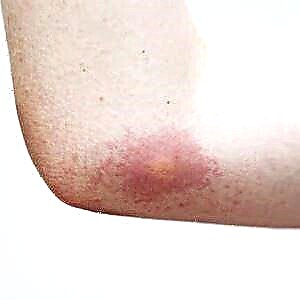 at the first degree, urticaria with severe itching occurs, quickly spreading throughout the child's body. The kid is very scared, lethargic and weak;
at the first degree, urticaria with severe itching occurs, quickly spreading throughout the child's body. The kid is very scared, lethargic and weak;- second degree. In addition to urticaria (itchy blisters), there is swelling of the face, lips, eyelids, and hands. The child may feel shortness of breath, nausea. There may be disorders of the digestive system in the form of thinning and frequent stools, abdominal pain;
- with the third degree of severity of insect allergies, shortness of breath, noisy breathing due to laryngeal edema;
- the most severe degree of systemic allergic reaction is characterized by a drop in blood pressure, loss of consciousness.
Occasionally, unusual reactions are observed in the form of hemorrhagic vasculitis, serum sickness, damage to the heart, kidneys, and nervous system.
In blood tests, a decrease in the level of platelets, disorders of the coagulation system, anemia can be detected.
What to do if a child is bitten by a bee?
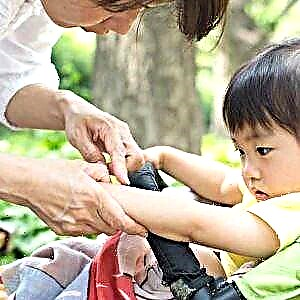 If a child has been bitten by a bee, the first step is to remove the sting as quickly as possible.
If a child has been bitten by a bee, the first step is to remove the sting as quickly as possible.Remove the sting carefully, without squeezing it. For this purpose, you can use a nail, a pin.
- When stinging in a limb, a tourniquet can be applied above the bite site to stop the poison from entering the bloodstream.
- Further, your actions depend on whether your child has had manifestations of insect allergy before, whether the child is allergic.
- With a burdened history, you should immediately call the ambulance team.
- Before the arrival of an ambulance, parents need to follow the recommendations of the treating allergist in case of a bee sting.
A child who has ever suffered a systemic allergic reaction to an insect bite remains at risk of developing anaphylactic shock when stung by a bee for life. Such patients are usually advised to carry an adrenaline-filled syringe pen. The prescription for this drug is prescribed by a doctor. Parents should be able to inject the drug into the rectus femoris muscle in the event of an emergency. The dose of adrenaline depends on the child's body weight and is 0.1 ml / kg. Doses of more than 0.3 ml should not be administered.
- If, in front of your eyes, a child first begins to develop an allergic reaction to a bee sting with the appearance of edema and hives, immediately call an ambulance.
- Before the ambulance arrives, the child can be given an antihistamine - Suprastin, Zodak, Ksizal, Fenistil.
How to provide first aid in case of severe local allergic reaction?
With a rapidly growing edema at the site of the sting, local histamine receptor blockers can be used in the form of gels (Psilo-balm, Fenistil-gel).
 When a seal appears at the site of the bite, creams with glucocorticosteroids are used - Lokoid, Advantan, Elok. It will not be superfluous to take antihistamines inside in a short course.
When a seal appears at the site of the bite, creams with glucocorticosteroids are used - Lokoid, Advantan, Elok. It will not be superfluous to take antihistamines inside in a short course.
Indications for consultation with an allergist-immunologist:
- pronounced local adverse reactions when bitten by insects;
- episodes of suffocation, urticaria, loss of consciousness due to stings of bees, wasps and other insects.
Is insect allergy curable?
Due to the fact that bee and wasp stings are often the cause of life-threatening conditions, a treatment method has been developed that allows you to permanently get rid of this type of hypersensitivity. From the age of 5, children in clinics in Europe and the United States receive allergen-specific immunotherapy with bee venom allergen. In Russia, this method of treatment is not widespread, since there are no patented allergens for treatment.
To obtain industrial allergens, bee venom is obtained by electrical stimulation with the addition of human albumin for stabilization. The effectiveness of ASIT therapy is 90%.
Recommendations for patients allergic to insect bites
- The most effective treatment for insect allergies is to avoid contact with insects. It is forbidden to stay near apiaries, dumps and other places of bee congestion. True, it is quite difficult to avoid this in the summer-spring period.
- When leaving the city, use insect repellents, repellents.
- In the summer, take antihistamines in the dosage prescribed by the doctor in especially severe cases of allergy, if contact with insects cannot be avoided.
- You must have a first-aid kit with an anti-shock set (prescribed by a doctor).
- Carry with you "Passport of an Allergic Disease Patient" indicating the type of allergy, diagnosis, list of medicinal products.
- It is forbidden to eat honey, propolis, royal jelly and other beekeeping products.
- It is not recommended to use antibiotics of the penicillin series, B vitamins, iodine-containing preparations in patients with insect allergies.
- It is forbidden to walk barefoot on the grass, eat outside.
- During the season when bees leave, you should not use strong-smelling cosmetics, especially perfume.
- A child suffering from insect allergy should be under the supervision of an allergist-immunologist for a long time.
Advice
In the season of high insect activity, when going outside, be sure to have with you:
- anti-shock first aid kit. The composition of the first-aid kit: Prednisolone 25 mg in ampoules, Clemastine 2 ml, syringes, Adrenaline.
- passport of a patient with an allergic disease.
To prevent an unpleasant meeting with a bee, while walking down the street, watch your child. Especially if the baby eats something sweet, or is dressed in bright clothes, they most of all provoke a bee sting. If your child is stung by a bee, don't panic. Timely assistance is the key to the health of your baby.
Article rating:

 at the first degree, urticaria with severe itching occurs, quickly spreading throughout the child's body. The kid is very scared, lethargic and weak;
at the first degree, urticaria with severe itching occurs, quickly spreading throughout the child's body. The kid is very scared, lethargic and weak; If a child has been bitten by a bee, the first step is to remove the sting as quickly as possible.
If a child has been bitten by a bee, the first step is to remove the sting as quickly as possible.